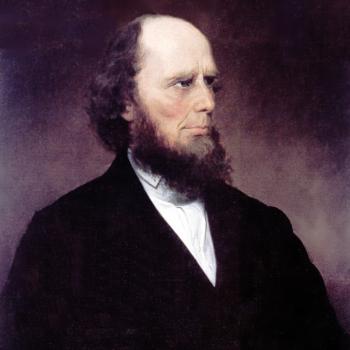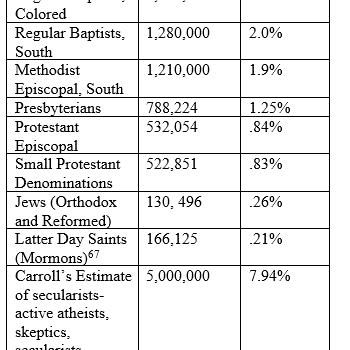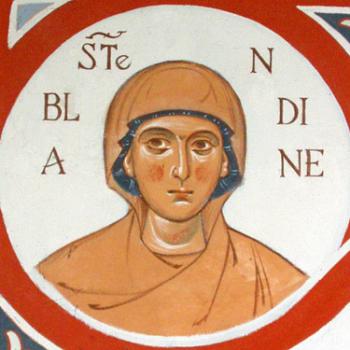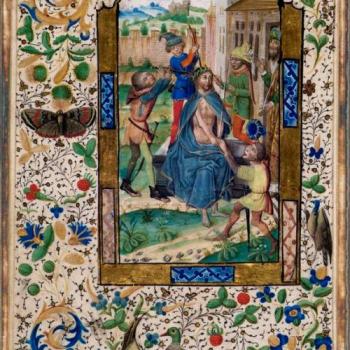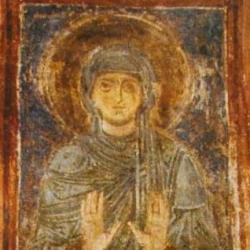This post is part of a series at the Anxious Bench on ‘Contested Ideas in the History of Ideas’, which brings debates from contributors’ respective fields to the fore. Look for more posts in the series throughout the month of October.
It’s football season, and in the southeast (and for large parts of American society), that means traditions. Tailgates, lucky gameday attire, foods, gatherings… Even before we get to the holiday season, the fall is saturated with traditions that shape the moods, perspectives, and actions of many for months. Some of these traditions certainly look odd to those watching. And even within a group of fans or within a family, no one can quite agree on what exactly THE traditions are that everyone should be following. But we certainly know when someone breaks one of ours, whether that be wearing the wrong color on game day or sitting in the wrong chair.
I’m currently teaching a course on the history of women in the church, and throughout these first seven weeks, the topic of tradition keeps coming up. Our conversations around the topic of tradition often involve befuddlement from students as they read sources calling something “tradition” that they’ve never experienced. Even more confusingly, sometimes, from week to week as we move forward chronologically, they read texts justifying decisions by appealing to traditions that they know from our study simply didn’t exist. As we think this October about contested ideas in the history of ideas, about debated and often misunderstood topics in church history, it seems more and more to me like tradition is one of these.
Everyone has an idea in their minds as to what “tradition” means when it comes to the church, its theology, and its practice. Tradition might mean a certain interpretation of a difficult scripture passage, a certain perspective on church leadership, a certain approach to liturgy and worship, a certain idea of holiness, a certain framework for sexuality… the list goes on and on. And we tend to hold tightly to the very “traditionalness” of our chosen traditions, seeing our own traditions more traditional or valuable than others. Like Tevye and his village in the classic musical Fiddler on the Roof, we can list out the way things should work, and we hold tightly to the idea that things are this way because that’s how they’ve always been– it’s tradition. (Side note here, if you didn’t sing rather than read the first word of this post’s title, may I recommend listening to Fiddler? You’ll never again be able to read the word “tradition” the same way, and you’ll understand why writing this post has been a challenge.)
One specific way that this keeps coming up in my class on women in the church is in our discussions of chastity, virginity, marriage, and sexuality. My students, looking back from their twenty-first century American context, have been astounded by some of the arguments for virginity and celibacy brought forward by past believers. Jerome’s letter to Eustochium, one of many similar arguments for virginity and celibacy in the patristic period, contains statements like “I praise wedlock, I praise marriage, but it is because they give me virgins.” Statements like these from Jerome and other authors combine with interpretations of Genesis that understand Adam and Eve as celibate virgins prior to the Fall, ultimately supporting the rise of monasticism and an emphasis on virginity and celibacy in the first thousand years of church history. Appeals to tradition in medieval texts to support this encouragement of chastity have felt foreign to the class, for we have inherited a very different tradition in our modern context. Arguments for the holiness of marriage and against celibate clergy from Reformers like Katharina Schütz Zell have felt far more familiar to them. But even then, the traditions that Zell critiques and the ones she references to support her position are still different than their own.
Traditions are tricky. Traditions rely on a shared understanding of the past, an understanding developed by people who look back with the same perspective and looking for the same thing. Traditions are never stable, nor are they permanent: in fact, as soon as you start looking too closely at any one tradition, you start to notice that there are almost always alternate traditions that could also be drawn upon. I wonder if this is one of the dangerous things about tradition: we all want to think that ours are right, but we are uncomfortable looking at whether they’re actually rooted in historical reality or practice. And because traditions are an appeal meant to unite people in a shared community with a shared understanding of the past, traditions inevitably leave out people, ideas, or practices that conflict with the future they’re trying to build. This points to another challenging thing about traditions: we often don’t inherit them from the source we think we do. Sometimes (maybe even oftentimes) the traditions we apply in our churches weren’t drawn from church history or theology, but instead from culture– and then over time, through repeated use in church settings, become normalized as tradition rooted in a theological reason or decision. I think that we as modern Christians often don’t usually notice the real roots of traditions unless we go looking for them, and I think more times than not we might be surprised by what we find.
Now I want to be careful here, for there are indeed shared theological traditions in the creeds and in the historic doctrines of the faith that are universal and true. In fact, one of the things that’s striking in my women in the church class is how much we do agree with these past believers on: the Trinity, the divinity and nature of Christ, the resurrection, and so on and so forth. Our shared historic faith is more than just a tradition, and on these key theological points, we do have clear roots for our shared belief, in scripture, church councils, and creeds. But we don’t usually argue about the divinity of Christ when we’re arguing about tradition in church history; instead, we argue about marriage, or elders, or liturgy, or other matters that are primarily tied to orthopraxis rather than orthodoxy. As we start this series on ‘Contested Ideas in the History of Ideas,’ perhaps we should think carefully about what ideas we’re holding to as tradition. In light of church history and the global practice of Christ’s global church, do the things we hold so tightly to actually hold up? Or should we be letting go of some of these ‘traditions’ in favor of a closer adherence to Christ and the core of our shared faith? Tradition is a fickle authority, one that means different things to different people and at different times. If we find ourselves prioritizing tradition, any tradition, over Christ, I think we need to take a hard look at the song we’re singing (even if it’s catchy) and its impact on our churches, loved ones, and witness.




